#Damour Massacre
Explore tagged Tumblr posts
Text

thisunapologeticjew
The Damour Massacre occurred on January 20, 1976, during the Lebanese Civil War. Palestinian terrorists attacked the predominantly Christian town of Damour, south of Beirut. Armed forces overran the town, killing an estimated 150–582 civilians, including women and children, in brutal fashion. Survivors were displaced, and the town was systematically destroyed.
360 notes
·
View notes
Text
@realMaalouf
49 years ago today, Palestinians invaded the Lebanese Christian town of Damour and massacred hundreds of civilians.
Men were lined up against the walls of their homes and gunned down.
Women were tortured and gang-raped.
Babies were shot in the back of their heads.
Pregnant women had their babies cut out of the womb.
‘It was an apocalypse’, said Father Labaky, a priest who survived the massacre.
“They were coming in thousands, shouting ‘Allahu Akbar! Let us attack them for the Arabs, let us offer a holocaust to Mohammad’, they were slaughtering everyone, men, women and children.”

7 notes
·
View notes
Text
youtube
Mayssa Jallad - Holiday Inn (January to March)
Blue hides in my body Plays on the piano, drinks the wine Standing in the elevator, leaning against missiles And the restaurant spins while the sniping goes on
4kilometers away, in Karantina A massacre On the 18th of January
20kilometers away, in Damour A massacre On the 20th of January
How shall we respond How shall we respond How shall we respond

Marjaa: The Battle of the Hotels" is a concept album born of the idea of merging singer/songwriter Mayssa Jallad's two vocations: music and urban research/architectural history. Written in collaboration with producer Fadi Tabbal, the music builds upon Tabbal's spatial approach to sound and Jallad's research on Beirut's Hotel District.



レバノン、ベイルートの暖かく晴れた朝、レバノンのシンガーソングライター、かつ、建築家のマイッサ・ジャラドが、レバノンの首都の高層ビルの廊下、つまりダハリズの中から優雅に姿を現す。 計画では、ジャラドが私を彼女の街のツアーに連れて行ってくれるということ��が、これはある意味、彼女の新しいアルバムのツアーでもある。レバノンのレーベル、Rupturedからリリースされた「The Battle of The Hotels」は、レバノンの歴史に飛び込むものとなっている。 レバノン内戦中に展開した紛争を題材としたもので、1975年10月から1976年3月までの5か月間の内戦を記録したものである。 ジャラドさんはベイルートで育ち、幼い頃から何か重大なことがベイルートで起こったという感覚を持っていた。 「何かが本当に間違っているといつも感じていましたが、それを突き止めることができませんでした」と彼女は言います。 「街自体が壁に弾痕を残して手がかりを与えてくれましたが、得られたのは断片だけでした。」ジャラドは、国を引き裂き、1975年4月から1990年10月まで続いたレバノン内戦について言及している。その戦争の歴史はレバノンの学校のカリキュラムの一部ではなく、その話題が出ても背景にある。 ささやかれた秘密。 「混乱が終わると、市を東と西に隔てる境界線は[一夜にして]消え、民兵は著名な政党や議会の議員に頼るようになった」とジャラド氏は説明する。
0 notes
Text

This little bitch blocked me but if they thought that meant I wouldn't reply they have another thing coming.
First of all, the leap of logic here is absolutely breathtaking. That just seems to be OP's thing though. Don't think the Islamic Republic should be hailed as a savior? Well clearly you support genocide. Your family fled Lebanon during the war? Well clearly they were Phalangists. Particularly egregious for me, since the other half of my family fled from Mussolini, whose party the Phalanges were modeled after, but I have a feeling OP here has never had a coherent thought in their life and wouldn't know nuance if it hit them in the face. Moving on.
Maybe once OP here learns how to spell Shatila* I'll be able to take them more seriously, but anyway. Yes, a massacre happened in the middle of a war, shocking. This particular massacre was a response to the brutal Damour massacre, which was organized by the PLO (Palestinian Liberation Organization). I feel like if you don't want casualties, maybe don't start a civil war though?
I think the claim that the civil war happened because Palestinians were being mistreated by Lebanon is really a perfect illustration of what I was saying about this website being full of idiots inadvertently robbing non-white people of agency in their attempts to dissolve them of any responsibility. And though it's true that Lebanon welcomed Palestinian refugees without having any long-term plans for what they would do with them (and mostly just leaving the UN to deal with them), the idea that this was the reason for the civil war is complete and total revisionist history. And no, I don't actually think Palestinians are bloodthirsty beings who do things for no reason, you absolute waste of space. I think they came up with a strategy to sow discord in order to further their own political agenda. Because the historical reason Palestinian presence in Lebanon was an immediate cause for the civil war was because the PLO knowingly chose to further sectarian divide in Lebanon for political gain by trying to get Lebanese Muslims to fight Israel on their behalf.
As for the civil rights of Palestinians in modern-day Lebanon, I'm baffled as to what OP thinks that has to do with me personally considering my family hasn't lived there since the 1970s and the country is now very obviously Muslim-run. Frankly the upholding of anyone's civil rights isn't exactly the Middle East's specialty. Thanks to the PLO stoking the flames of discord, Lebanon is now the very definition of a failed state and frankly this is the least of its worries. I'm sure Hamas will show us all up and respect everyone's civil rights if they ever agree to become an independant nation :) Of course that will never happen when they can just keep Palestine a state and siphon the charity donated to the Palestinian people all while complaining they aren't their own nation.
Anyway, I'd tell OP to go fuck themselves but it looks like they've already done that.
The fact that tumblr is cheering for fucking Iran really says it all and shows y'all need to shut up forever about the Middle East. We get it, you think the only good Jew is a dead Jew. But aligning yourselves with the Islamic Republic? Fucking really?
122 notes
·
View notes
Photo


L'insulte (Ziad Doueiri, 2017)
#L'insulte#Ziad Doueiri#2017#Lebanon#lebanese cinema#lebanese movies#middle east#middle east movies#middle east cinema#Adel Karam#cinema#Kamel El Basha#movies#Rita Hayek#قضية رقم ٢٣#Palestinian refugees#Beirut#Palestinians#Lebanese Civil War#Damour massacre#Black September#Middle Eastern politics
20 notes
·
View notes
Text





Damour massacre God bless the souls of our martyrs ذكرى مذبحة الدامور الله يرحم شهداء الكتائب و كل من استشهد لكى نبقى نحن و يبقى الوطن .
8 notes
·
View notes
Text

Richard Millet
De Tell ez Zaartar aux banlieues d’Europe
Je lis dans L’Orient-Le Jour, excellent quotidien libanais, ce samedi 13 août 2016, un article de Massoud Achkar rappelant qu’il y a quarante ans tombait, dans la banlieue nord de Beyrouth, le camp palestinien de Tell ez Zaartar – la Colline du Thym, en arabe. Situé sur une hauteur stratégique, ce bastion, comme les autres camps de réfugiés, permettait, depuis 1969, à l’occupant palestinien surarmé et bénéficiant de la faiblesse de l’Etat libanais, de rançonner, piller, terroriser, enlever, voire tuer les citoyens du pays du Cèdre, particulièrement les chrétiens. La guerre civile avait débuté, le 13 avril 1975, par une de ces exactions, qui avait fait déborder la coupe. Le siège de Tell ez Zaartar,commencé en juin 76, durera 54 jours, les forces chrétiennes du PNL, du Tanzim, des Gardiens du Cèdre, du groupe Bach Maroun Khoury et même de volontaires « civils » de la région, bientôt appuyées par les Phalangistes, avançant mètre par mètre, quelquefois par des égouts pleins de rats, le plus souvent sur un terrain rendu difficile par des fortifications et des mines, pour obtenir la reddition de feddayin pourtant mieux armés et entraînés, et financièrement bien dotés par des pays arabes soucieux de maintenir le Liban dans sa faiblesse, de ne pas laisser Israël en paix et, par-dessus tout, de ne pas accueillir chez eux ces réfugiés qu’ils manipulaient à leur guise, dans le crépuscule de la Guerre froide ; la situation n’a pas changé aujourd’hui, avec la « crise des réfugiés ». Deux cents jeunes chrétiens, souvent mal entraînés et mal armés, sont morts à Tell ez Zaartar… La propagande palestinienne tournera cette défaite à son avantage, dans la logique victimaire dont elle a fait son fond de commerce, avec le terrorisme et la haine, Tell ez Zaartar cependant bientôt éclipsé par les massacres de Chatila et de Sabra, lesquels ont également entraîné dans un semi-oubli ceux de la ville chrétienne de Damour, au sud de Beyrouth, où l’inhumanité palestinienne n’a rien eu à envier à ceux qui ont commis les massacres de Sabra et Chatila.L’emplacement du camp est aujourd’hui difficilement situable : l’urbanisation frénétique de la capitale libanaise l’a géographiquement effacé, mais non ôté des mémoires, nul ne se souciant néanmoins d’y établir quelque mémorial, comme il se doit, au Liban, où la paix n’en est pas vraiment une, et où l’Etat demeure faible, le pays étant toujours sans président, comme naguère la Belgique – ce qui en dit long sur le multiculturalisme idéologique dont le glapissant Trudeau est le promoteur inlassable. Le Liban, dont l’essence est de permettre aux chrétiens de vivre librement dans un monde arabo-musulman généralement hostile, mérite mieux que cette fiction de république qui est encore l’ultime terre de refuge pour ceux dont l’Evangile dit qu’ils sont, comme nous, la lumière du monde, mais dont l’Occident ne veut pas entendre parler : les chrétiens d’Orient paient encore le fait de s’être opposés à la « résistance » palestinienne de laquelle l’Occident reste généralement entiché, eût-elle les couleurs sinistres du Hamas. Ils le paieront jusqu’à la mort.Ce siège et ces combats, je les ai évoqués dans La Confession négative (Gallimard 2009), livre quasiment passé sous silence par la presse prétendue littéraire, qui n’est jamais aussi heureuse que lorsque l’idéologie lui donne l’occasion de ne pas lire un livre de littérature, l’ineffable directeur de Charlie Hebdo profitant d’une émission télévisée pour me traiter de mercenaire – autrement dit de tueur. Les mercenaires étaient nombreux, pendant la guerre civile libanaise, mais uniquement du côté opposé, qui se proclamait « palestino-progressiste », bientôt « islamo-progressiste », risible alliance de mots dont on voit aujourd’hui en quoi consistait le progressisme. La même presse stipendiée ne parlera pas davantage de Tuer (Léo Scheer, 2015), récit dans lequel je reviens sur la guerre du Liban. Ne pas lire un écrivain est donc une décision politique et, pour l’écrivain, économique, tout comme le fait d’ignorer que la guerre est tout autre chose qu’un film, un jeu vidéo, une opération de drones, une affaire confiée à des milices privées, donc privatisée – la privatisation de la guerre s’inscrivant dans une déréglementation de la fonction guerrière, et son traitement médiatique étant soumis à son éventuelle exploitation cinématographique. Voilà qui devrait faire réfléchir aux impostures de la démocratie, en ces temps de transparence idéologique, tandis que la guerre est devenue civile en Europe.Les Tell ez Zaartar européens existent désormais en Europe : il est plaisant de voir que les immigrés qui y sont armés utilisent des armes qui ont parfois servi au Liban et, de là, sont passées en Yougoslavie. Ces camps portent le nom de Molenbeek, de Calais, des quartiers nord de Marseille, des banlieues des grandes villes européennes, partout où l’immigration installe ses « soldats » et où les « loups » se réveillent, convertissant certains indigènes à la « guerre sainte ». Il n’est pas interdit d’espérer que, comme en 1975 et en 1976, de jeunes chrétiens, collant sur la crosse de fusils d’assaut des images du Christ Roi ou de la Sainte Vierge, la croix autour du cou, avanceront un jour vers ces bastions pudiquement appelés « quartiers difficiles », ou plus justement « zones de non droit » – exactement ce qu’était le camp de Tell ez Zaartar. Les conditions sont là, et l’Etat français particulièrement faible, en ce moment, avec la crise des prétendus réfugiés, l’immigration galopante, la décomposition morale du pays et ses alliances avec les monarchies pétrolières qui financent ceux-là mêmes qu’elles prétendent combattre.
https://richardmillet.wixsite.com/siteofficiel?fbclid=IwAR3xtkvTgNM1nsq9LtU_oRe4AJp3qokK24S51TliAAwDbKT_rqhN-fesH2w
http://www.juanasensio.com/archive/2009/07/26/la-confession-negative-de-richard-millet-gallimard.html
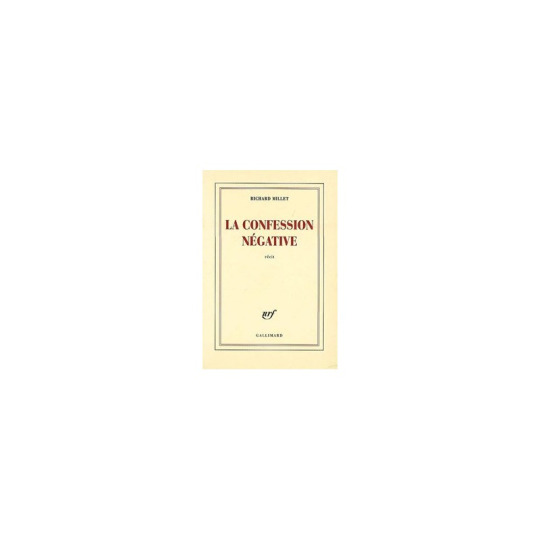
1 note
·
View note
Text
READING DE NACHT READING 2017
my favourite books of the year
my overall favourite book of the year:

david keenan “this is memorial device” [faber & faber] (2017)
POST-CYBERPUNKSTOMPF:
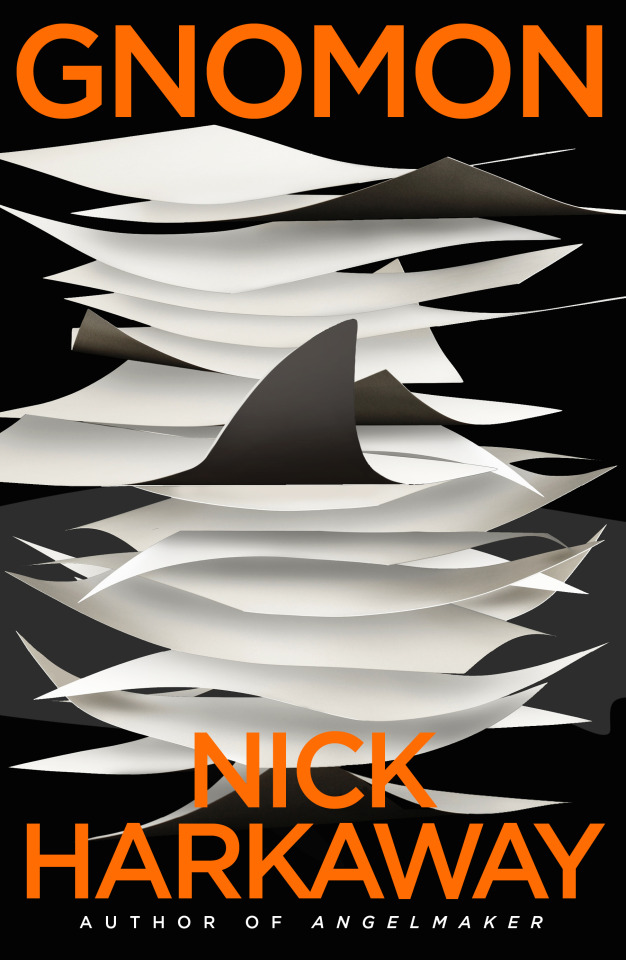
01 nick harkaway "gnomon" (2017) 02 kim stanley robinson "new york 2140" (2017) 03 m john harrison "you should come with me" (2017) 04 gardner dozois (ed) "the year's best science fiction: thirty-fourth annual collection" (2017) 05 james morrow "the asylum of dr. caligari" (2017)
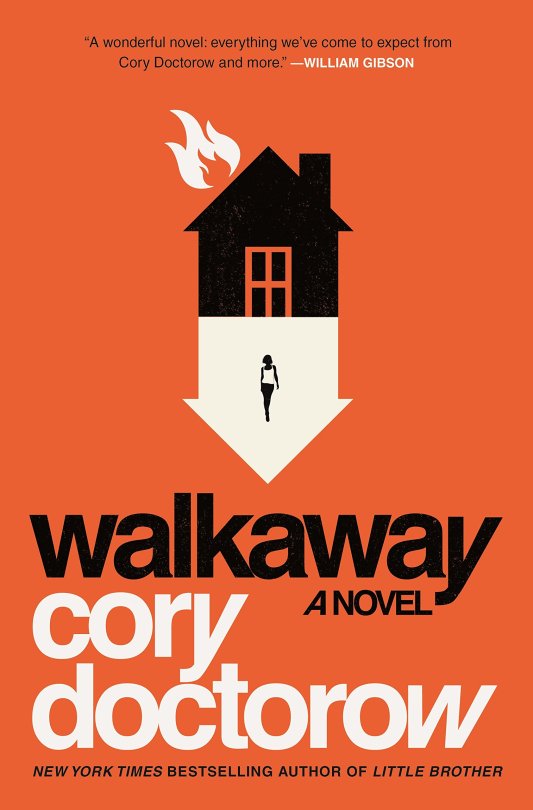
06 annalee newitz "autonomous" (2017) 07 cory doctorow "walkaway" (2017) 08 dave hutchinson "acadia" (2017) + dave hutchinson "slow companions" (2017) 09 ed finn (ed) visions, ventures, escape velocities: a collection of space futures" (2017) 10 bryan thomas schmidt (ed) "infinite stars" (2017)
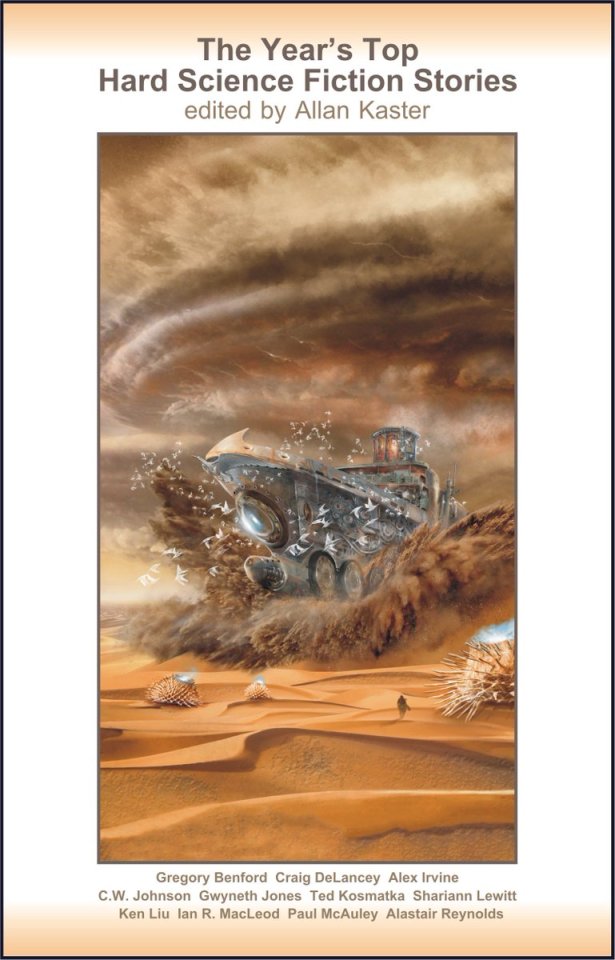
11 allan kaster "the year's top hard science fiction stories" (2017) 12 nina allen "the rift" (2017) 13 charles stross "the delirium brief" (2017) 14 simon morden "at the speed of light" (2017) 15 ada palmer "seven surrenders" (2017) & "the will to battle" (2017)
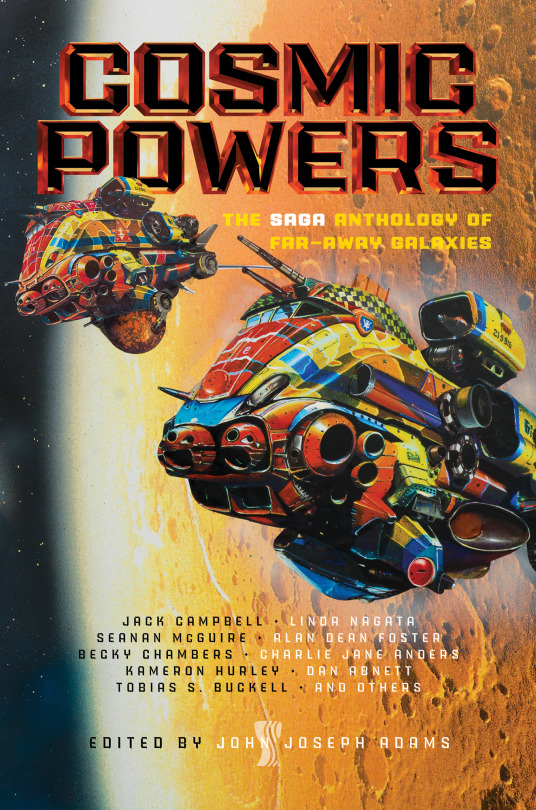
16 yoon ha lee "raven stratagem" (2017) 17 john joseph adams (ed) "cosmic powers" (2017) 18 mur lafferty "six wakes" (2017) 19 taiyo fujii "orbital cloud" (2017) 20 andrew bannister "creation machine" (2016) + andrew bannister "iron gods" (2017)

21 gareth l powell "entropic angel & other stories" (2017) 22 ann leckie "provenance" (2017) 23 monica louzon (ed) "catalysts, explorers & secret keepers: women of sf" 24 ian mconald "wolf moon" (2017) 25 neal stephenson & nicole galland "the rise & fall of d.o.d.o." (2017)

26 adam roberts "the real-town murders" (2017) 27 tim pratt "the wrong stars" (2017) 28 jim c. hines "terminal alliance" (2017) 29 charles stross "the empire games" (2017) 30 james s.a. corey "persepolis rising" (2017) + james s.a. corey "strange dogs" (2017)

31 allen steele "avengers of the moon (captain future)" (2017) 32 neal asher "infinity engine [transformation III]" (2017) 33 jason m. hough "injection burn" (2017) + jason m. hough "escape velocity" (2017) 34 donna scott (ed) "best of british science fiction 2016"/una mccormack "star of the sea" (2016) 35 david marusek "upon this rock"/john scalzi "collapsing empire" (2017)
& a couple of re-readings: richard k. morgan "takeshi kovacs trilogy" in view of the coming netflix series and colin harvey "damage time" (2010) ... no further reason needed!
STOMPF KLASSIK:
01 matthew mcintosh "the mystery.doc" (2017)
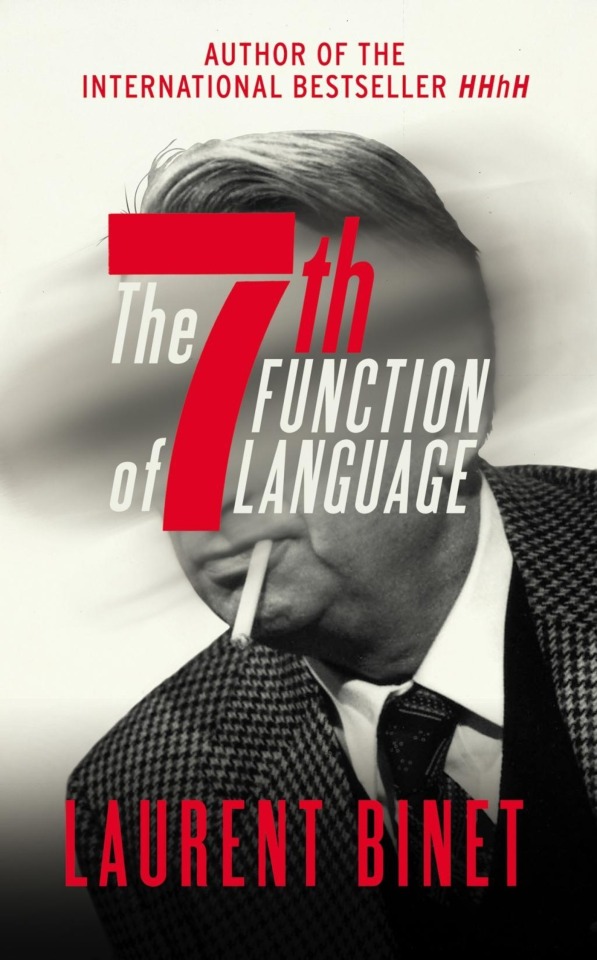
02 sébastien roger "les désordres du monde. walter benjamin à port-bou" (2017) 03 laurent binet "hhhh" (2012) 04 + laurent binet "the 7th function of language" (2017) 05 jean echenoz "special envoy" (2017)
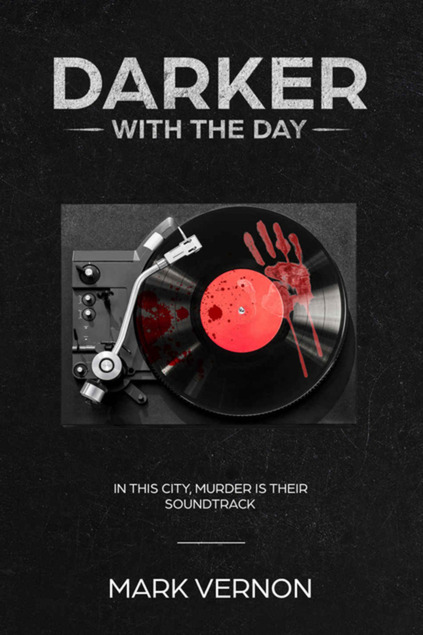
06 paul stanbridge "forbidden line" (2016) 07 ryu murakami "tokyo decadence (2016) 08 aifric campbell "the semantics of murder" (2008) 09 mark vernon "darker with the day" (2017) 10 magnus mills "the forensic records society" (2017)
GEDÄCHTNISSTOMPF:

01 mckenzie wark "general intellects: 25 thinkers for the 21st century" (2017) 02 claude lefort "wat is politiek?" (2016) 03 ger groot & sam ijsseling "dankbaar en aandachtig" (2013) 04 martin heidegger "beiträge zur philosophie (vom ereignis)" (2003) 05 hannah arendt "totalitarisme" (2014)
06 daniel birnbaum & kim west "life on sirius: the situationist international & the exhibition of art" (2016) 07 ger groot "de geest is uit de fles" (2017) 08 sean gaston "the impossible mourning of jacques derrida" (2006) 09 bas heijne "onbehagen: nieuw licht op de beschaafde mens" (2016) 10 giorgio colli "ecrits sur nietzsche" (2017)
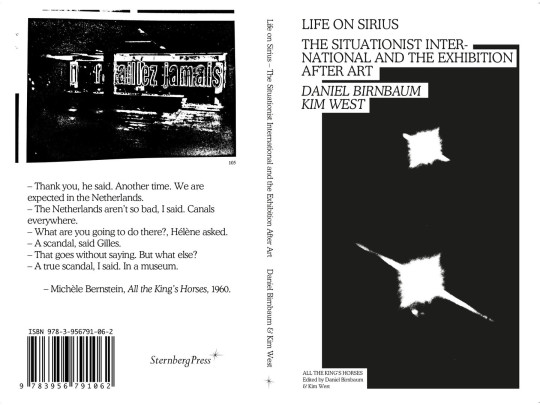
11 frédéric neyrat "échapper à l'horreur" (2017) 12 slavoj zizek "against the double blackmail, refugees, terror & other troubles with the neighbours" (2017) 13 henning mankell "quicksand" (2016) 14 jacques rancière "en quel temps vivons-nous? conversations avec eric hazan" (2017) 15 alain badiou "je vous sais si nombreux... " (2017)
16 alain badou & jean-luc nancy "la tradition allemande dans la philosophie" (2017) 17 tom mccarthy "typewriters bombs jellyfish [essays]" (2017) 18 valeria luiselli "tell me how it ends: an essay in 40 questions" (2017) 19 fredric jameson "raymond chandler: the detections of totality" (2016) 20 umberto eco "chronicles of a liquid society" (2017)
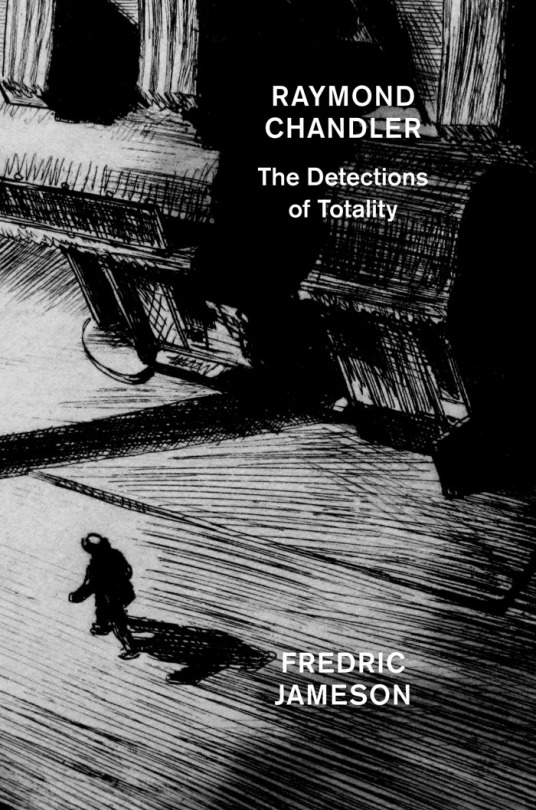
POLARSTOMPF:
01 chris petit "pale horse riding" (2017) + chris petit "the butchers of berlin" (2016) + chris petit "the human pool" (2002) + chris petit "the psalm killer" (1996)
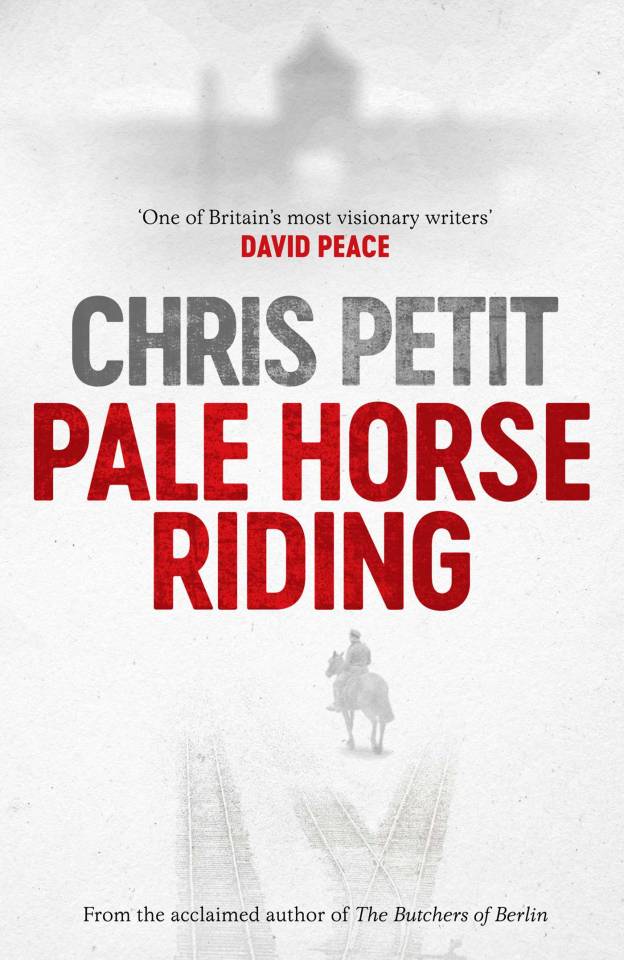
02 john le carré "a legacy of spies" (2017) 03 david hewson "sleep baby sleep" (2017) 04 mick herron "slow horses" (2010) + mick herron "dead lions" (2013) + mick herron "the list" (2015) + mick herron "real tigers" (2016) + mick herron "spook street" (2017) 05 jussi adler-olsen "the scarred woman" (2017)
06 jo nesbo "the thirst" (2017) 07 ben fergusson "the spring of kasper meier" (2014) 08 e.o. chirovici "the book of mirrors" (2017) 09 toni coppers "de zaak magritte" (2017) 10 james r. tuck "mama tried (crime fiction inspired by outlaw country music)" (2016)

YOUNGADULTSTOMPF:
01 philip pullman "la belle sauvage" (2017)
PLATTERSTOMPF:
01 cosey fanni tutti "art sex music" (2017) 02 david keenan "this is memorial device" (2017) 03 joanne demers "drone and apocalypse" (2015) 04 + joanne demers "listening through the noise" (2010) 05 robert barry "the music of the future" (2017)

06 richard cabut & andrew gallix (eds) "punk is dead: modernity killed every night" (2017) 07 butt gavin, kodwo eshun, & mark fisher (eds) "post punk then and now" (2016)" 08 sandra garrido "why are we attracted to sad music" (2016) 09 tomas serrien "klank: een filsofie van de muzikale ervaring" (2017) 10 marlies de munck "waarom chopin de regen niet wilde horen" (2017)

11 daniel warner "live wires" (2017) 12 will carruthers "playing the bass with three left hands" (2016) 13 steve hanley "the big midweek-life inside the fall (2016) 14 tex perkins "tex" (2017) 15 mark lanegan "i am the wolf" (2017)
17 simon reynolds "shock & awe" (2016) 18 andrew o'neill "a history of heavy metal" (2017) 19 bryan ray turcotte "the fucked up reader" (2007) 10 bob batchelor (ed) "literary cash" (2017) 20 simon webb "a 1970s teenager. from bell-bottoms to disco dancing" (2013)

both bell-bottoms and disco dancing can be had @ muntpunt !
POESISSTOMPF:

01 jonty tiplady "zam bonk dip" (2010) 02 murray lachlan young "how freakin' zeitgeist are you?" (2017)

BILDERSTOMPF:
01 peter-andré bloch "sils-maria - "l'île bienheureuse" pour nietzsche" (2017)

02 willem vanhuyse "atlas van de imaginaire verklaringen: het complete handboek vor de 'patafysicus'" (2017) 03 reinhard kleist "nick cave: mercy on me" (2017) 04 william gibson "archangel (a graphic novel)" (2017) 05 a. uderzo, didier conrad & jean-yves ferri "astérix et la transitalique" (2017)
WISSENSCHAFTSTOMPF:
01 thibault damour & mathieu burniat "mysteries of the quantum universe" (2017) 02 brian cox & jeff forshaw "universal: a journey through the cosmos" (2017)
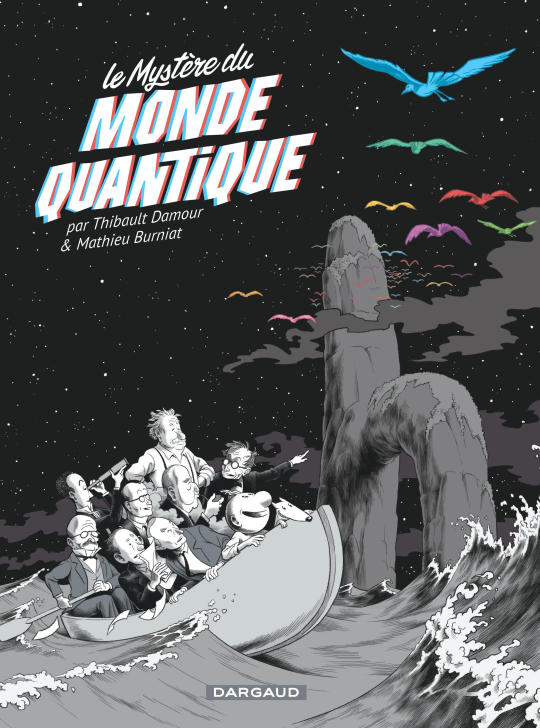
HUMOURSTOMPF:
01 james acaster "james acaster's classic scrapes" (2017)

02 chris wade “the story of derek and clive” (2017)
CYCLOSTOMPF:
01 frederik bakelandt "grinta! de bergen: 10 legendarsche wielercols" (2017)

02 lucien van impe & filip osselaer "de dag dat ik de tour verloor" (2017) 03 jonas heyerick & jelle vermeersch "bahamontes #17-#20" (2017) 04 frank strack "the hardmen: legends of the cycling gods" (2017) 05 matthias m. r. declercq "de val" (2017)

… tsundoku !
may your home be safe from tigers, leroy, x HNY!
the TBR pile grew with...
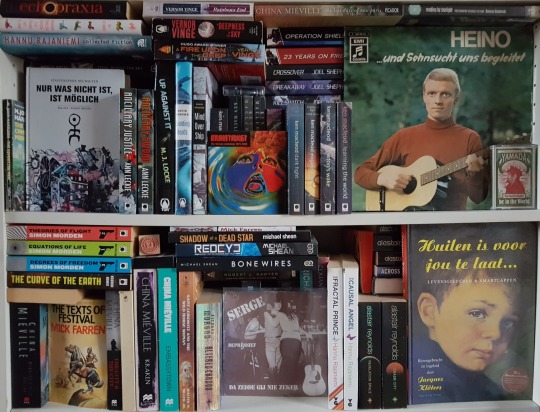
lászló krasznahorkai "the world goes on" (2017) samanta schweblin "fever dream" (2017)
peter mark, peter helman & penny snyder (eds) "the mountains in art history" (2017)

alvin lucier (ed) "eight lectures on experimental music" (2017) rhian e jones & eli davies "under my thumb: songs that hate women and the women who love them" (2017)
arne dahl "watching you" (2017) philip kerr "prussian blue" (2017) antti tuomainen "the man who died" (2017) jon michelet "the frozen women" (2017) nicolás obregón "blue light yokohama" (2017)

alex lamb "exodus" (2017) c robert cargill "sea of rust" (2017) chris brookmyre "places in the darkness" (2017) d nolan clark "forgotten worlds" & "forbidden suns" (2017) dan moren "the caledonian gambit" (2017) elizabeth moon "cold welcome" (2017) ferrett steinmetz "the uploaded" (2017) greg egan "dichronauts" (2017) ian whates "the ion raider" (2017) jaine fenn "the martian job" (2017) jamie sawyer "pariah" (2017)
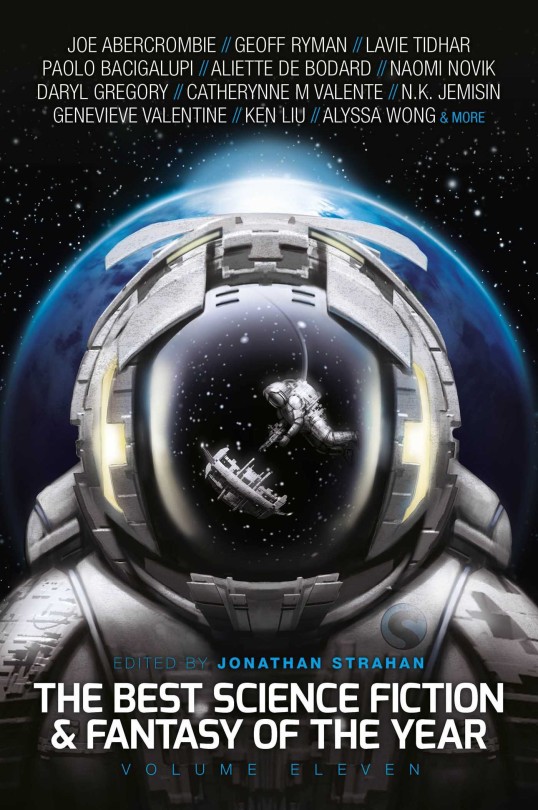
jeff noon "a man of shadows" (2017) joe m mcdermott "the fortress at the end of time" (2017) joe zieja "communication failure" (2017) john kessel "the moon and the other" (2017) john meaney "destructor function" (2017) jonathan strahan (ed) "best sf &f of the year vol 11" & "infinity wars" (2017) kameron hurley "the stars are legion" (2017) kay kenyon "at the table of wolves" (2017) malka older "null states" (2017) marina j. lostetter "noumenon" (2017)

martha wells "all systems red" (2017) neil clark (ed) "galactic empires" & "more human than human" (2017) paul mcauley "austral" (2017) r.e. stearns "barbary station" (2017) robert kroese "last iota" (2017) sage walker "the man in a tree" (2017) stephen baxter "obelisk" (2017) + stephen baxter "the massacre of mankind" (2017) sulari gentill "crossing the lines" (2017) the justified ancients of mu mu “2023 a trilogy” (2017) wendy n. wagner "an oath of dogs" (2017)

27 notes
·
View notes
Link
The Damour massacre took place on January 20, 1976, during the 1975–1990 Lebanese Civil War. Damour, a Maronite town on the main highway south of Beirut, was attacked by Palestine Liberation Organisation units. Part of its population died in battle or in the massacre that followed, and the remainder were forced to flee. (...)
Twenty Phalangist militiamen were executed, and then civilians were lined up against a wall and sprayed with machine-gun fire. None of the remaining inhabitants survived. An estimated 582 civilians died. Among the killed were family members of Elie Hobeika and his fiancée. Following the Battle of Tel al-Zaatar later the same year, the PLO resettled Palestinian refugees in Damour. After the Israeli invasion of Lebanon in 1982, the Zaatar refugees were expelled from Damour, and the original inhabitants brought back.
1 note
·
View note
Photo

Damour massacre
The Damour massacre took place on January 20, 1976, during the 1975–1990 Lebanese Civil War. Damour, a Christian town on the main highway south of Beirut, was attacked by the Palestine Liberation Organisation units. Part of its population died in battle or in the massacre that followed, and the remainder were forced to flee. The attackers destroyed the buildings in the seaside village. The Christian cemetery was destroyed, coffins dug up, vaults opened, and bodies and skeletons thrown across the graveyard.[citation needed] The church was burnt and an outside wall was covered with a mural of Fatah guerrillas holding AK47 rifles. A portrait of Yasser Arafat was placed at one end. Other sources claim that the church was used as a repair garage for PLO vehicles, and also as a range for shooting-practice with targets painted on the eastern wall of the nave.
Twenty Phalangist militiamen were executed, and then civilians were lined up against a wall and sprayed with machine-gun fire. None of the remaining inhabitants survived. An estimated 584 civilians died. Among the killed were family members of Elie Hobeika and his fiancé. Following the Battle of Tel al-Zaatar later the same year, the PLO resettled Palestinian refugees in Damour. After the Israeli invasion of Lebanon in 1982, the Zaatar refugees were expelled from Damour, and the original inhabitants brought back.
According to Thomas L. Friedman, the Phalangist Damouri Brigade, which carried out the Sabra and Shatila massacre during the 1982 Lebanon War sought revenge not only for the assassination of Bashir Gemayel, but also for what he describes as past tribal killings of their own people by Palestinians, including those at Damour.
According to an eyewitness, the attack took place from the mountain behind the town. "It was an apocalypse," said Father Mansour Labaky, a Christian Maronite priest who survived the massacre. "They were coming, thousands and thousands, shouting 'Allahu Akbar! (God is great!) Let us attack them for the Arabs, let us offer a holocaust to Mohammad!', and they were slaughtering everyone in their path, men, women and children."
Perpetrators
The attack and subsequent massacre was carried out by a mixed crew of Palestinian militiamen aligned with the Lebanese National Movement (LNM).
According to journalist and author Robert Fisk, the attack was led by Colonel Abu Musa, a senior commander of the PLO and Fatah, and later leader of the anti-Arafat Fatah Uprising faction. Cedarland.org names Zuheir Mohsen, leader of as-Sa'iqa, a Damascus-based Palestinian faction operating directly on Syrian orders, and claims that he was known in Lebanon as the "Butcher from Damour".
The bulk of the attacking forces seems to have been composed of brigades from the Palestinian Liberation Army and as-Sa'iqa, as well as other militias, including Fatah. Some sources also mention the Popular Front for the Liberation of Palestine (PFLP), the Democratic Front for the Liberation of Palestine (DFLP), and the Muslim Lebanese al-Murabitun militia among the attackers. There are reports that PLO forces were additionally joined by militiamen from Syria, Jordan, Libya, Iran, Pakistan and Afghanistan, and possibly even Japanese Red Army terrorists who were then undergoing training by the Popular Front for the Liberation of Palestine in Lebanon.
via Wikipedia
There are no good guys in any civil war.
0 notes